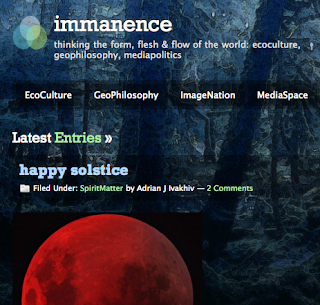In the end of October 2010, participants in the international Convention on Biological Diversity (CBD) included in their agreement to protect biodiversity , a moratorium on geoengineering. This CBD moratorium came timely as the debate around geoengineering virtually exploded internationally with several high-profile reports being published by, amongst others, the British Royal Society, and the U.S. Congress. The IPCC has announced it will organize several expert meetings in 2011 to focus on geoengineering, to help prepare the next review of climate science, due for completion in 2014.
But what does this “moratorium” really imply? This is not a trivial question considering the often acclaimed fragmentation of global environmental governance, and the fact that most geoengineering schemes would have impacts on additional planetary boundaries such as land use change and biodiversity. Two main (and highly simplified of course) interpretations seem to exist in a quite complicated legal debate.
One is that the CBD moratorium places a considerable limit on geoengineering experimentation and attempts. The only exception are “small-scale” controlled experiments that meet specific requirements, i.e.: that they are assumed in controlled settings and for explicit scientific purposes, are subject to prior environmental impact assessment, and have no impacts beyond national jurisdiction. Proponents of this position note that even if the CBD moratorium is not legally binding, governments launching large geoengineering experiments would “risk their credibility and diplomatic reputations”, a strong enough disincentive that effectively “blocks risky climate techno-fixes”. The Canadian NGO ETC Group elaborates this point here.
The second position instead highlights several points that undermine the strenght of the CBD moratorium. The first is that the agreement has no legally binding power, and that formal sanctioning mechanisms are absent. The CBD moratorium is “soft law” which implies that States still could launch geoengineering schemes unilaterally. Note also that the United States has not formally ratified the CBD convention.
Second, even though the CBD moratorium might be seen as defining an upper limit on the scale of geoengineering experiments, key definitional questions remain to be teased out. What is to be defined as “small-scale” and “experiment”? And what is its status compared to other related pieces of international law, such as the UN Convention on the Law of the Sea, the London Convention, and the Convention on the Prohibition of Military or Other Hostile Use of Environmental Modification Techniques, just to mention a few.
Third, as the US Congressional Research Service notes in its report, international agreements are best equipped to deal with disputes between countries, and not necessarily between one country and one private actor, or between private actors that may shift locations to suit their interests (pp. 29). And major private or semi-private actors and funders are out there, including the Bill Gates and Richard Branson $4.6 million Fund for Innovative Climate and Energy Resources, Ice911, Intellectual Ventures (see WJS article “Global warming might be solved with a helium balloon and a few miles of garden hose”), Carbon Engineeering, Planktos Foundation, and GreenSea Ventures (featured in Nature here).
So, do we really have a real, effective global moratorium on geoengineering? Far from it it seems. Feel free to disagree in the comment field below.



